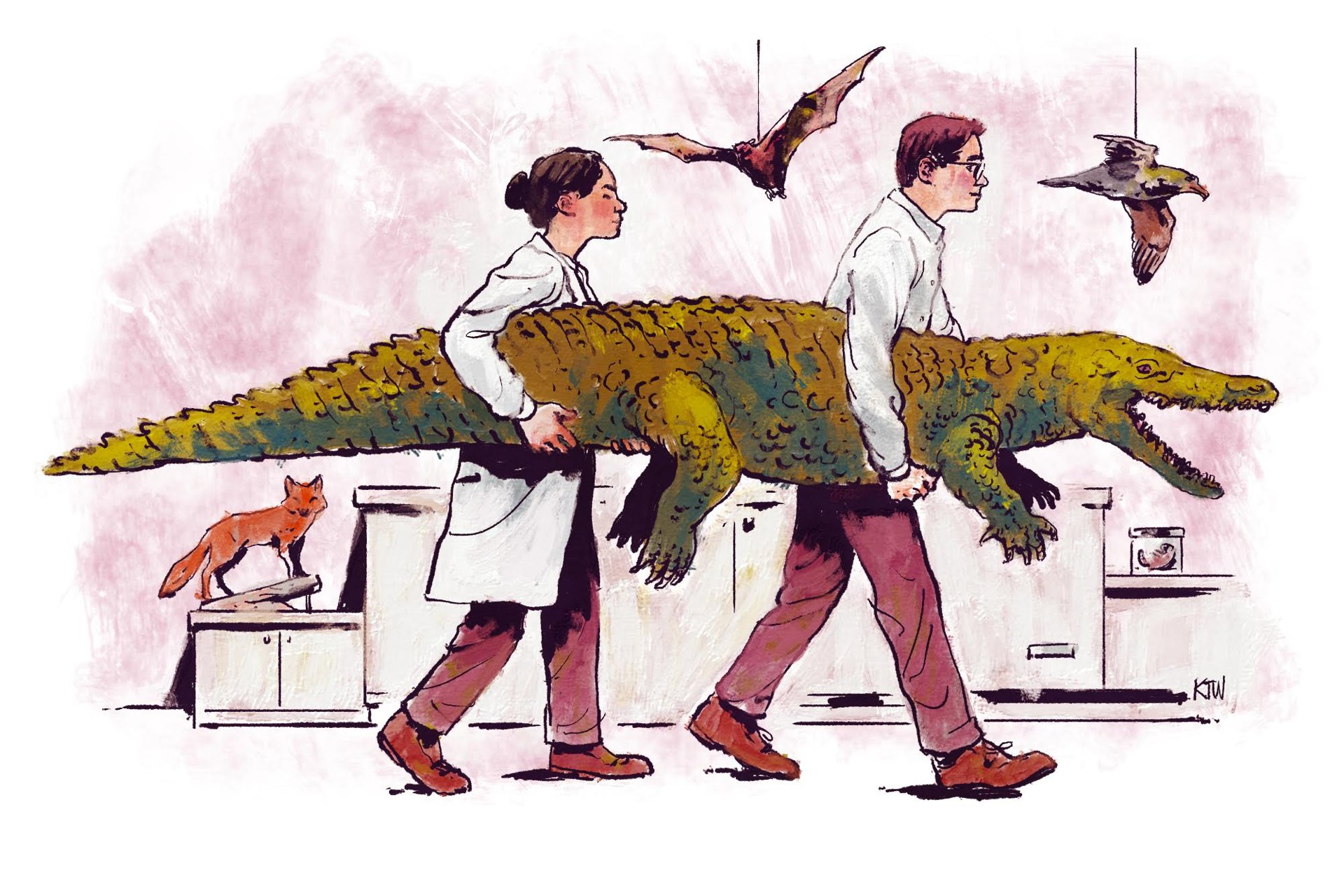The Ed's Up #123

Natural History Museums Are Teeming With Undiscovered Species
"These discoveries strike me as being deeply sad, in a way that digging up prehistoric fossils is not. Here are creatures that are disappearing, or have disappeared within our lifetime, by our hand. They represent a large slice of nature that will only be discoverable through museums, because their living counterparts are no longer living. We can only learn that they existed at all by summoning their ghosts from cabinets. When Helgen and Hekkala work their way through collections, they’re like astronomers looking at the light of long-extinct stars. Museum collections, then, are windows not just into the hidden diversity of today, but the lost diversity of yesterday." (Image: Kyle Webster)
Why You Can't Keep Cockroaches Out of Your Home
"By confronting American cockroaches with an ever-narrower series of crevices,the duo found that although this insect typically stands 12 millimeters tall, it can squeeze through gaps of 3 millimeters—the height of two stacked U.S. pennies. It does this by squatting down and then compressing its body by half. It is the world’s worst Transformer: instantly changing shape from a cockroach into a much flatter cockroach. Delightful. Even worse, the compressed cockroaches are still disarmingly fast." (Image: Tom Libby, Kaushik Jayaram & Pauline Jennings)

This Bacterium Acts Like a One-Cell Eyeball
"Your eye is an inch-wide orb that detects light by focusing it onto a retina with a lens. Now, we know that a freshwater bacterium called Synechocystis does virtually the same thing, even though it’s 10,000 times smaller and consists of just a single, spherical cell. When light hits the cell, it becomes focused on the opposite side of the sphere, allowing the bacterium to sense where it’s coming from and move in that direction. Synechocystis is effectively a living lens, and its entire boundary is a retina." (Image: Conrad Mollineaux)
The Bitter Fight Over the Benefits of Bilingualism
"Since the 1960s, several studies have shown that bilingualism improves executive function—a catch-all term for advanced mental abilities that allow us to control our thoughts and behavior, such as focusing on a goal, ignoring distractions, or switching attention. But a growing number of psychologists say that this mountain of evidence is actually a house of cards, built upon flimsy foundations. According to Kenneth Paap, a psychologist at San Francisco State University and the most prominent of the critics, bilingual advantages in executive function “either do not exist or are restricted to very specific and undetermined circumstances." (Image: Charles Platiau) 
Modern humans originated in Africa, and started spreading around the world about 60,000 years ago. As they entered Asia and Europe, they encountered other groups of ancient humans that had already settled in these regions, such as Neanderthals. And sometimes, when these groups met, they had sex. Even though Neanderthals are now extinct, every living person outside of Africa can trace between 1 and 5 percent of our DNA back to them. What, if anything, the Neanderthal sequences are doing in our own genome? (Nikola Solic)

Oops! Giant Raptor’s Wishbone is Actually a Bit of Turtle Shell
"The dramatic beast was described by Robert DePalma from the Palm Beach Museum of Natural History, based on a incomplete skeleton that included parts of the backbone, arms, legs, and feet. But now, Victoria Arbour from the North Carolina Museum of Natural Sciences has shown that one of Dakotaraptor’s bones—the wishbone, or furcula—isn’t what it seemed. It wasn’t even part of a dinosaur at all. It was actually a piece of turtle shell." (Image: Emily Willoughby)
More good reads
- An interview with me on my career and science writing
- An often beautiful piece about veterans and parrots helping each other through PTSD, by Charles Seibert. Some weirdness in the quotes (social neurons? all vertebrates have compassion?) but the story’s great.
- NASA has built a rock collection so its rovers can practice punching holes in Mars. Wonderful Nadia Drake story. She also explains this week’s big news about that time when space exploded a bit and released waves of science that made scientists happy
- Sad story about the genuine harm that terrible press releases can inflict on vulnerable people. By Ivan Oransky
- Is Toxoplasma driving chimps towards leopards? By Carl Zimmer
- These Scientists Saw Zika Coming. Now They’re Fighting Back. Superb colourful reporting by Sarah Zhang
- "Scientists have identified neural pathways that react almost exclusively to the sound of music — any music." By Natalie Angier
- You can train your body into thinking it’s had medicine. Two amazing stories from Jo Marchant.
- Another tragedy of sexual harassment, this time in anthropology. Reported by Michael Balter; with commentary from Azeen Ghorayshi who broke the first of the recent spate of stories.
- Human evolution is more a muddy delta than a branching tree. By John Hawks
You can also follow me on Twitter, find regular writing on my blog. If someone has forwarded this email to you, you can sign up yourself.
And that's it! Thanks for reading.
-Ed